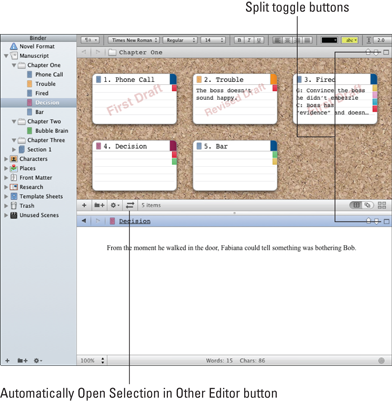Figure 8-8: A split screen that includes Corkboard and Editor panes.
Viewing the Corkboard in Split Screen
Say you’ve created index cards for your next chapter, but you haven’t actually written the scenes. While writing, you want to be able to refer to your index cards. The answer is Split Screen. It works just as I outline in Chapter 6, but rather than two Editor panes, you can view one Editor and one Corkboard pane.
Or you can have two Corkboards visible in Split Screen, instead of using a Stacked Corkboard.
You know you want to try it. Just follow these steps:
1. If you’re not already in Corkboard view, select the desired container in the Binder, and then choose View⇒Corkboard.
2. Click the Split toggle button in the header of the Corkboard (see Figure 8-8).
The Corkboard splits into two panes, displaying the same container in both.
3. Click in the pane in which you want to view the Editor.

4. Select the file that you want to edit in the Binder.
The file appears in the pane you activated in Step 3. Figure 8-8 shows an example of a split screen that has Corkboard and Editor panes.
5. To exit Split Screen view, click the Split toggle button in whichever pane you want to continue working with.

